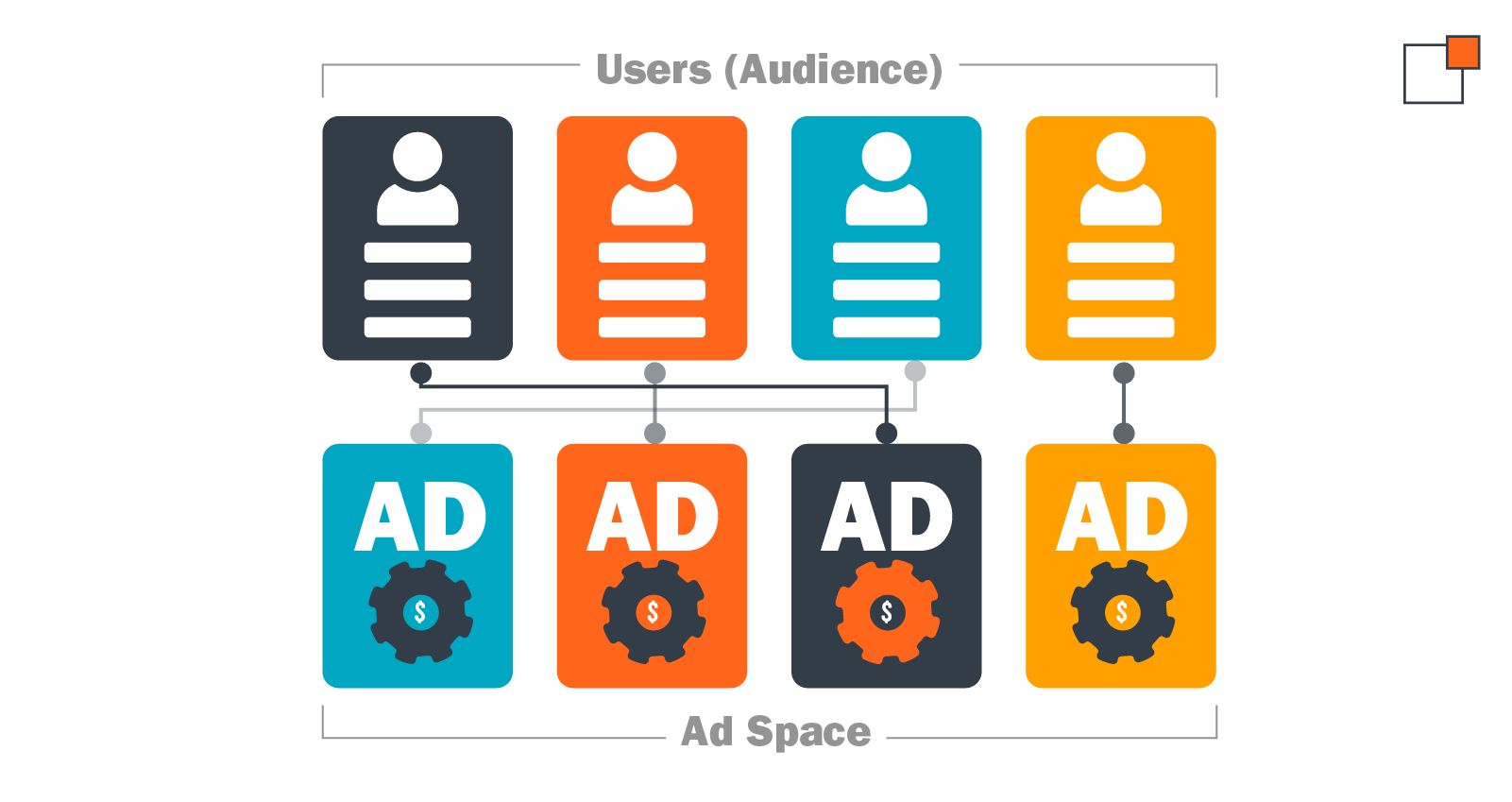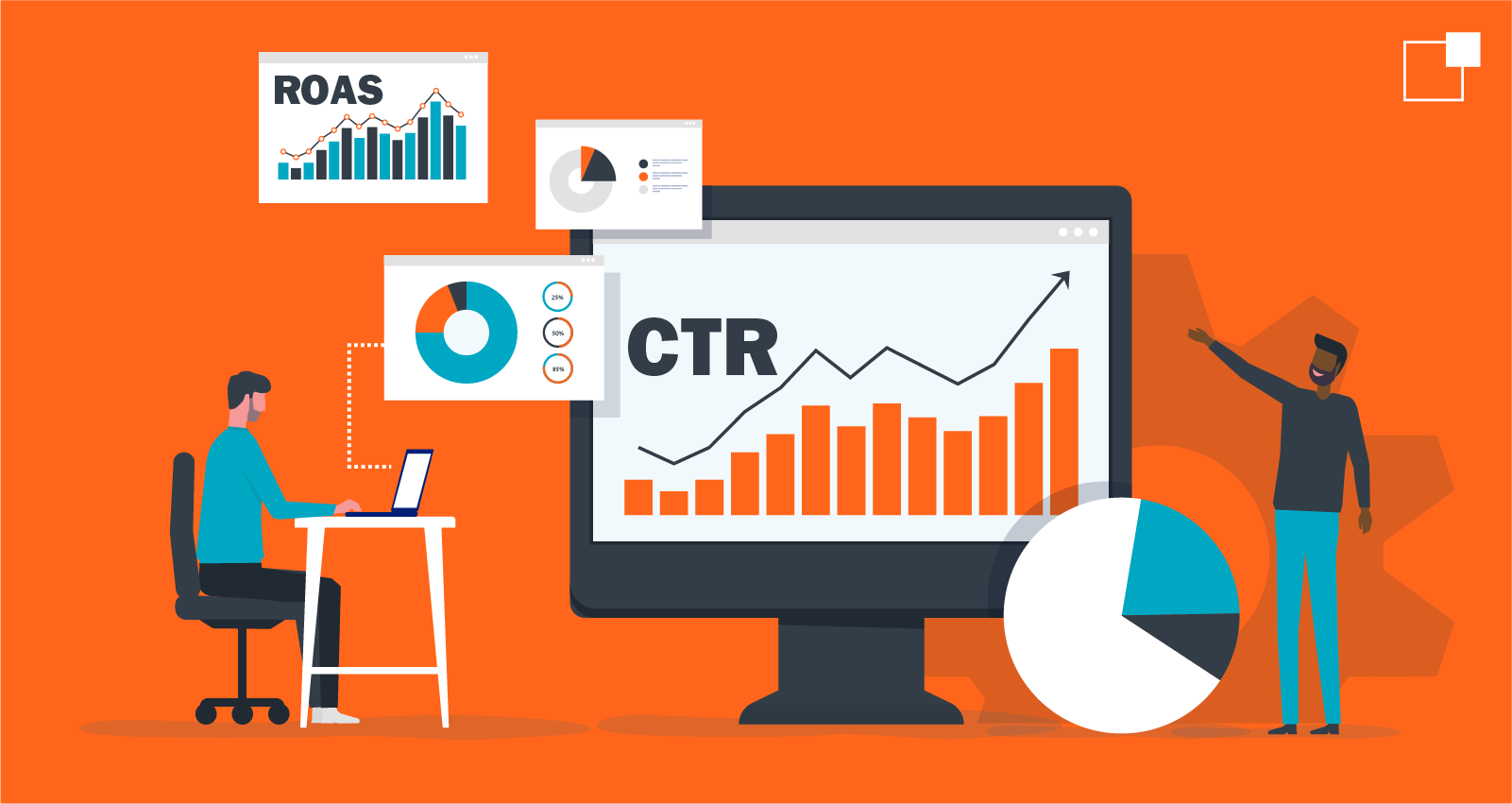Hit the mark every time with programmatic advertising
Targeting perfection
Ever noticed how some ads seem to read your mind? Like when you’ve been daydreaming about lounging in the sun with warm sand between your toes and the sounds of waves crashing, and suddenly, an ad for beachwear appears. Or maybe you finally decided against buying that new coffee maker, only to see an ad for it pop up, tempting you to make the purchase. That’s programmatic advertising working its magic behind the scenes.

Programmatic advertising allows marketers to reach the right people at just the right time. It uses data and algorithms to pinpoint exactly where and when your ads should show up, maximizing the chance they’re seen by interested consumers. Thanks to its precise targeting and ad optimization, programmatic advertising redefines the way we engage with potential customers.
What is programmatic advertising?
Think of programmatic advertising like a matchmaker for your ads and your audience, helping them connect in the most efficient and effective ways possible. Unlike traditional advertising methods where you manually buy ad space and hope for the best, programmatic advertising automates the whole process, buying and selling ad spots in real-time.
Types of programmatic advertising:
-
Real-time bidding (RTB): RTB is like an auction for ad space. Ads are bought and sold instantly based on bids, so you get the best spot for the right price, fast.
-
Programmatic direct: This is when you buy ad space directly from publishers at a set rate. It’s straightforward and ensures you get the exact inventory you want without the auction.
-
Private marketplaces (PMPs): PMPs are exclusive ad auctions where premium publishers sell space to a select group of buyers. It’s the VIP section for ads, offering top-notch placements and quality control.

The main characters in the programmatic universe:
-
Demand-side platforms (DSPs): These platforms let advertisers bid on and buy ad space across various sites, all from one place. They use data to target audiences and find the most ideal spots for your ads.
-
Supply-side platforms (SSPs): Publishers use SSPs to manage and sell their ad inventory. SSPs help optimize revenue by finding the highest-paying buyers for their available ad space.
-
Ad exchanges: As the middlemen of the ad world, ad exchanges connect DSPs and SSPs, making it easy for ads to be bought and sold in real-time and ensuring they end up in the right place.
The power of precise targeting
With programmatic advertising, you can zero in on highly specific audience segments to make sure your ads are seen by the most relevant consumers. Behavioral targeting shows ads based on what people have been up to online. So, if someone’s been searching for camping gear, they'll probably start seeing ads for tents and backpacks.
On the other hand, contextual targeting places ads based on the content of the page someone is on. If a consumer is looking up a recipe for pumpkin muffins, they might see ads for cooking tools or baking ingredients. They could even stumble across a promotion for a seasonal cooking class or a local fall festival.

Programmatic advertising uses a mix of data to make sure your ads hit the mark:
-
First-party data: This is info you get directly from your own interactions, like what users do on your website or app.
-
Third-party data: This comes from other sources outside your direct reach, including data brokers and public databases.
-
Zero-party data: This is the info users willingly share with you, like their preferences or feedback.
Enhancing efficiency and ROI
Programmatic advertising makes your campaigns more efficient and boosts ROI by simplifying the buying process. Automation takes care of a lot of the manual work, speeding up ad delivery and making everything run smoother. It continuously optimizes your ad placements based on real-time data, elevating your ad performance without constant hands-on management.
While it does boost your ROI, it requires a bit of thought and strategy to ensure you meet your goals. Choosing the right bidding model is key to getting the results you want. When picking a bidding model, you’ve got options: go for cost-per-thousand (CPM) if you want to build brand awareness, or cost-per-click (CPC) if you’re aiming for clicks and engagement. Each model has its strengths, so choose one that aligns with your campaign.
How to incorporate programmatic advertising into your strategy
Set objective and KPIs
Start by defining what you want to achieve with programmatic advertising. Are you looking to boost brand awareness or drive more conversions? Setting clear goals for your campaigns will guide your strategy and help you focus on what’s important.
Once you’ve got your campaign goals set, it’s time to figure out which key performance indicators (KPIs) you’ll use to measure success. Consider keeping track of metrics like click-through rates (CTR), conversion rates or return on ad spend (ROAS). A good CTR is typically around 2-3%, while a strong ROAS usually ranges from 400% to 600%. By keeping an eye on these KPIs, you can gauge how your campaigns are performing and determine whether you're reaching your targets.

Choose the right inventory and creative platform
Select inventory spaces and creative platforms that line up with your campaign goals. When picking inventory, look for spots where your target audience is most active, so your ads get seen by the appropriate consumers. Choosing inventory based on your audience’s interests and habits will improve your results.
The type of creative depends on what you’re advertising. For promoting content like blogs, native ads that blend in and feel like a natural part of the user's experience often work best. If you’re looking for cost-effective ways to increase brand awareness, display ads, which appear as banners or sidebars, are usually a solid choice. Audio or CTV ads can be more effective for longer calls-to-action or more complex services.
Making the most of your ad spend
While programmatic advertising automates a lot of the process, it’s still important to stay on top of your campaigns. Be sure to regularly check your data and make adjustments as needed. Analytics and data management tools let you see exactly how your ads are performing so that you can make smarter decisions. Experimenting with different ad formats and creatives through A/B testing can also help you refine your approach and get the best outcomes!
Want ads that really click with your audience? Our programmatic advertising experts will help you get more out of your ad spend. Get in touch with us to start optimizing your campaigns!
About the Author
Lexie Febel is a Content and PR Coordinator at thunder::tech. Her favorite pastime includes being cozied up with her cats while getting lost in the pages of a compelling book.
